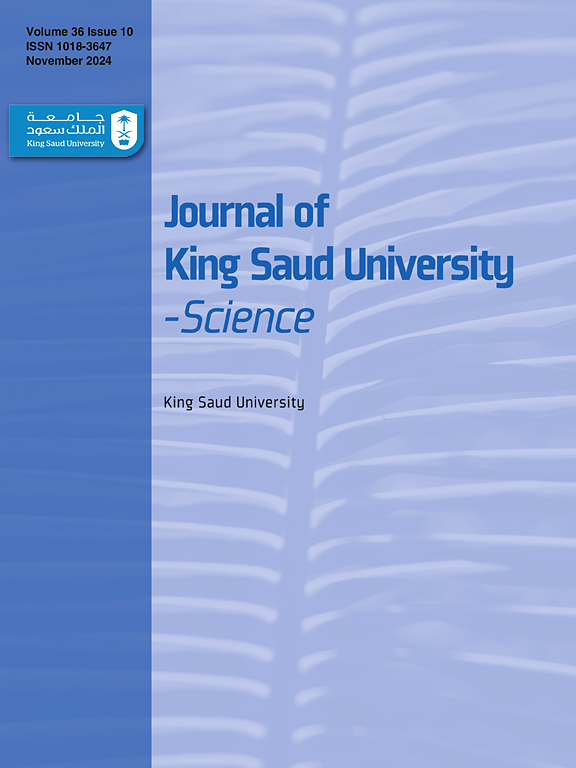Advancing Parkinson’s disease biopathology and drug discovery by dual cellular modelling
IF 3.6
3区 综合性期刊
Q1 MULTIDISCIPLINARY SCIENCES
引用次数: 0
Abstract
Parkinson’s disease (PD) is the fastest growing neurological disorder in the world. Its pathologic hallmarks are dopaminergic neuronal loss in the substantia nigra and alpha-synuclein accumulation in neurons. However, the patho-biologic mechanisms are largely unknown. Current drugs cannot slow or halt disease progression while clinical trials are mostly unsuccessful. Hence better cellular models are needed for pathological and drug discovery studies prior to in vivo validation. PC12 cells are commonly used for neurotoxicity studies but the Neuroscreen-1 (NS-1) variant has a faster doubling time and higher basal rate of neurite growth. We developed a NS-1 PD model with the neurotoxin 6-hydroxydopamine (6-OHDA) and MTT cell viability assay as readout. We optimized 6-OHDA concentration to a uniquely low 10 µM for a closer approximation to in vivo neurotoxicity. NS-1 cells treated with 6-OHDA displayed hallmark dopamine loss and apoptotic cell death. We used the model to screen a series of xanthones − polyphenolic compounds found in many medicinal plants. We report a novel activity of thwaitesixanthone in the PD model. The model was validated using alpha-mangostin (a neuroprotectant in in vivo and in vitro PD models) which was the most active in restoring cell viability. Alpha-synuclein is now a therapeutic target for stopping PD progression. Human HEK293 cells have neuronal attributes and reported to express pathologic alpha-synuclein. We hypothesized the transfection-efficient HEK293T cells is an optimal cell line for monitoring human alpha-synuclein levels. We make the first report that 6-OHDA treatment increased pathologic alpha-synuclein expression in HEK293T cells. This alpha-synucleinopathy model was validated using alpha-mangostin which attenuated 6-OHDA-induced pathologic alpha-synuclein to baseline levels. Thus we developed a novel NS-1 PD model more representative of in vivo neurotoxicity complemented by a human HEK293T cell-based alpha-synucleinopathy model for tracking pathologic alpha-synuclein levels. We present these dual models for producing in vitro findings with increased likelihood of clinical translation.
通过双细胞模型推进帕金森病的生物病理学和药物发现
帕金森病(PD)是世界上增长最快的神经系统疾病。其病理特征是黑质多巴胺能神经元的丧失和突触核蛋白在神经元中的积累。然而,其病理生物学机制在很大程度上是未知的。目前的药物不能减缓或阻止疾病进展,而临床试验大多不成功。因此,在体内验证之前,需要更好的细胞模型进行病理和药物发现研究。PC12细胞通常用于神经毒性研究,但NS-1变体具有更快的倍增时间和更高的神经突生长基础速率。我们建立了NS-1 PD模型,以神经毒素6-羟基多巴胺(6-OHDA)和MTT细胞活力测定为数据。为了更接近体内神经毒性,我们将6-OHDA浓度优化到10µM。6-OHDA处理的NS-1细胞显示多巴胺缺失和细胞凋亡。我们使用该模型筛选了许多药用植物中发现的一系列山酮-多酚类化合物。我们在PD模型中报道了一种新的韦地西松酮活性。该模型使用α -山竹苷(体内和体外PD模型中的神经保护剂)进行验证,该模型在恢复细胞活力方面最活跃。α -突触核蛋白现在是阻止PD进展的治疗靶点。人HEK293细胞具有神经元属性,并报道表达病理性α -突触核蛋白。我们假设转染效率高的HEK293T细胞是监测人α -突触核蛋白水平的最佳细胞系。我们首次报道了6-OHDA处理增加了HEK293T细胞中病理性α -突触核蛋白的表达。这种α -突触核蛋白病模型是用α -山竹素验证的,它将6-羟多巴胺诱导的病理性α -突触核蛋白减弱到基线水平。因此,我们开发了一种新的NS-1 PD模型,更能代表体内神经毒性,并辅以基于HEK293T细胞的α -突触核蛋白病模型,用于跟踪病理α -突触核蛋白水平。我们提出这些双重模型,以产生体外研究结果,增加临床翻译的可能性。
本文章由计算机程序翻译,如有差异,请以英文原文为准。
求助全文
约1分钟内获得全文
求助全文
来源期刊

Journal of King Saud University - Science
Multidisciplinary-Multidisciplinary
CiteScore
7.20
自引率
2.60%
发文量
642
审稿时长
49 days
期刊介绍:
Journal of King Saud University – Science is an official refereed publication of King Saud University and the publishing services is provided by Elsevier. It publishes peer-reviewed research articles in the fields of physics, astronomy, mathematics, statistics, chemistry, biochemistry, earth sciences, life and environmental sciences on the basis of scientific originality and interdisciplinary interest. It is devoted primarily to research papers but short communications, reviews and book reviews are also included. The editorial board and associated editors, composed of prominent scientists from around the world, are representative of the disciplines covered by the journal.
 求助内容:
求助内容: 应助结果提醒方式:
应助结果提醒方式:


